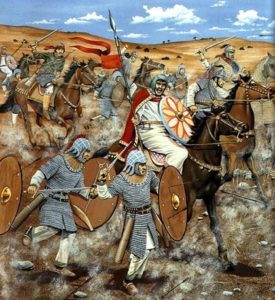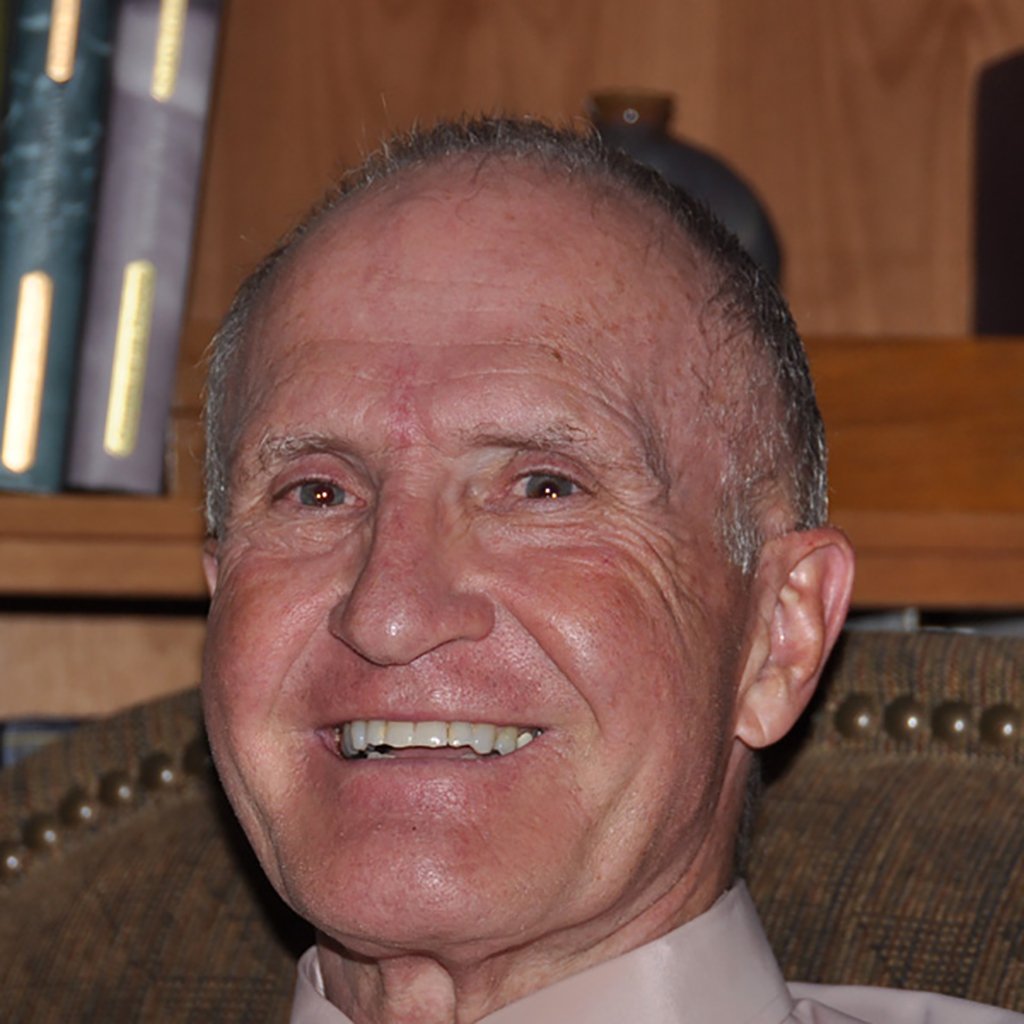Part VII Some History of Zion, Jerusalem’s Temple Mount, and Jerusalem’s Church of the Holy Sepulchre
From the Arabian Caliphs [636-to 1100 CE] with the First Crusade

On a hot day of August, 636 CE, the two opposing armies faced each other on the banks of the Yarmuk, a Jordan tributary. The Arabians–25,000 strong–were commanded by Khalid; the Byzantine army–twice as numerous and composed mostly Armenian and other mercenaries–was led by a brother of Emperor Heraclius. The day was an excessively hot one clouded by wind-blown dust and presumably purposely chosen for the encounter by the Arabian generalship. The Byzantine fighters were cleverly maneuvered into a position where the dust storm struck them in the face. Only a few managed to escape with their lives. The fate of Syria–one of the fairest of the Eastern Roman provinces–was decided. “Farewell, O Syria,” were Heraclius’s parting words, “and what an excellent country this is for the enemy!”
By the end of the reign of the second caliph, Umar ibn al-Khattab [634-644], the whole of Arabia, part of the Sasanian Empire, and the Syrian [including Palestine] and Egyptian provinces of the Byzantine Empire, had been conquered; the rest of the Sasanian lands were occupied soon afterwards.
After completing the occupation of Syria and Palestine, the Arabs turned to organizing the administration of the newly occupied territories. As they were exclusively fighters and did not have any administrators capable of fitting themselves into the well-developed bureaucracy that the Byzantines had left behind them, they decided to leave the existing system of administration to carry on its work as in the past, with the same local functionaries. Most of Palestine, up to the border of the valley of Jezreel and Beth-shean, belonged to one district known as “Jund Filatine” which was, in fact, the Palaestina Prima of the Byzantine era together with part of Palaestina Tertia. Galilee, the southern part of the Lebanon and parts of the Golan fell within Jund Urdunn, which constituted the Palaestina Secunda of the Byzantines.
The people of Madina saw power being drawn northwards towards the richer and more populous lands of Syria and Iraq, where governors tried to make their power more independent. Such tensions came to the surface in the reign of the third caliph, ‘Uthman ibn ‘Affan (644-56). A movement of unrest in Madina, supported by soldiers from Egypt, led to ‘Uthman’s murder in 656. This opened the first period of civil war in the community. The claimant to the succession, ‘Ali ibn Abi Talib [656-661] was a cousin of Muhammad and married to his daughter Fatima. Ali’s alliance grew weaker, and finally he was assassinated in his own city of Kufa. Mu’awiya [the first Umay-yad] proclaimed himself caliph and ‘Ali’s elder son, Hasan, acquiesced in it.
The coming to power by Mu’awiya [661-80] has always been regarded as marking the end of one phase and the beginning of another. The first four caliphs, from Abu Bakr to ‘Ali, are known to the majority of Muslims as the Rashidun or “Rightly Guided”. Later caliphs were seen in a rather different light. From now on the position was virtually hereditary. Although some idea of choice, or at least formal recognition, by the leaders of the community remained, in fact from this time power was in the hands of a family, known from an ancestor, Umayya, as that of “the Umayya”.The change was more than one of rulers. The capital of the empire moved to Damascus, a city lying in a countryside abler to provide the surplus needed to maintain a court, government, and army, and in a region from which the eastern Mediterranean coastlands and the land to the east of them could be controlled more easily than from Madina.
In the 690s, the first great building which clearly asserted that Islam was distinct and would endure was erected. This was the Dome of the Rock, built on the site of the Jewish Temple in Jerusalem, now turned into a Muslim haram; it was to be an ambulatory for pilgrims around the rock where, according to Rabbinic tradition, God had called upon Abraham to sacrifice Isaac.
Throughout the Umayyad period Palestine played no significant political role. Its population was partly composed of Jews and Christians, whose families had always lived there and towards whom the caliphs adopted a tolerant and lenient attitude. It is true that special taxes were imposed upon both Jews and Christians, but they were moderately light at the beginning. The government recognized the religious communities as socio-political entities, and the rabbis and priests were responsible to the authorities for the members of their communities.
Not least amongst the various causes which contributed to the downfall of the Umayyads was the fundamental split within Islam, which produced the two dominant sects known as the Sunna [Orthodox] and the Shi’a. The Shiites–who maintained that the Prophet’s cousin ‘Ali and his descendants were the only legitimate candidates for the caliphate–rose many times in rebellion against Umayyad rule. Although these revolts proved to be abortive in themselves, they did help to undermine the strength of the empire from within.
During the first decades of the eighth century, Umayyad rulers made a series of attempts to deal with movements of opposition. In the 740s, their power suddenly collapsed in the face of yet another civil war and a coalition of movements with different aims but united by a common opposition to them. The Umayyads were defeated in a number of battles in 749-750, and the last caliph of the house, Marwan II, was pursued to Egypt and killed.
Syria was replaced as center of the Muslim caliphate by Iraq. The power of Abu’l-‘Abbas [749-54] and his successors–known from their ancestor as “Abbasids”, lay less in the eastern Mediterranean countries, or in Hijaz–which was an extension of them–than in the former Sasanian territories: southern Iraq and the oases and plateaus of Iran, Khurasan, and the land stretching beyond it into central Asia. With the transfer of the political center to Iraq they succeeded in completing the major, process of shifting of international trade routes connecting the Middle East and the Far East from Syria to the valleys of the Tigris and the Euphrates. Almost overnight Palestine became a marginal land and began to deteriorate.
In 868, an officer called Ahmad ibn-Tulun–the son of a freed Turkish slave–was sent to Egypt to serve as lieutenant to the governor of the province. A year later he himself became the governor of the province, declared its independence [from the Abbasids] and put a stop to the remittance of annual taxes to the Baghdad treasury. In 877, exploiting the deaths of the governors of Syria and Palestine, he was able–without difficulty–to extend his authority over these provinces as well. With the rule of ibn-Tulun a period of renewed political, social and cultural activity began in Palestine, after the long period of neglect that marked the hundred years of direct Abbasid rule.
The Abbasid caliph made an attempt to regain control over Syria and Palestine, and dispatched a strong expeditionary force from Iraq, which invaded Palestine in 892. Khumawayh—the son of the caliph, who was an able statesman as well as a very talented general–scored a decisive victory over this army in a battle near Abu Futrus. After this battle, the Abbasids abandoned for a time their attempts to take Palestine from the Tulunids. However, within a few years of the death of Khumawayh [904] they had managed to regain it with ease. For the following thirty years [906-935] Palestine remained under Abbasid rule.
A series of preparatory incursions into Egypt–which had gravely deteriorated under the rule of the Ikhshids–paved the way for a decisive attack, led by the Fatimid general Jawhar, in 969. Egypt was conquered easily and the Fatimid forces, sustaining the momentum of the attack, went on to take Syria and Palestine.
At the beginning of summer of 970, the Fatimid army under Ja’far ibn al-Fallah, turned towards Palestine. Theoretically, this should have been the outset of a century of Fatimid rule in Palestine. In fact, the Fatimids were compelled to join battle with not a few of the enemies who stood in their way: the Arabs–led by the Banu Tayy’–who were headed by the Banu’l-Jarrah family; the Qarmatis; a Turkish army under the command of Alptakin, who was based in Damascus; and Arab tribes in Syria with the Banu Hamdan at their head. In the background, the Byzantines were lurking, and about to continue their attempts to spearhead southward to Jerusalem. This war was waged in several stages and the enemies changed, but all in all, it was an almost unceasing war which destroyed Palestine.1030 was the first year of peace in the country. Comparative calm and political and military stability existed in Palestine under Fatimid rule for only some forty years. The invasion of the Turkish tribes put an end to this near-stability at one blow. By 1079, the Seljuks wrested Syria and Palestine from local rulers and from the declining Fatimids. Generally, the Turcoman period–, which lasted less than thirty years–was one of slaughter, vandalism, economic hardship, and the uprooting of populations, especially in Palestine. After the death of the third Great Sultan in 1092, civil war broke out between his sons; and the process of political fragmentation–which had been interrupted by the Seljuk conquest–was resumed. It was during this period of weakness and dissension that–in 1096–the Crusaders arrived in the Levant.


